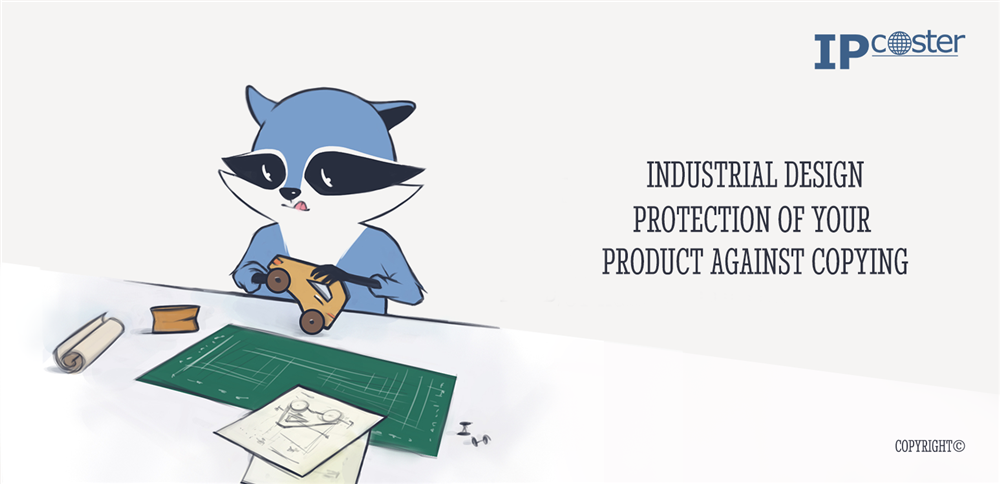IP-Academy

外观设计专利保护您的产品免遭抄袭
为防止他人抄袭、盗用或窃取您所创造的产品外观,保护该产品的外观至关重要。这类知识产权保护可通过外观设计权实现。
尽量各个国家存在细微差别,但是外观设计保护的基本要求是符合新颖性和独特性(欧盟和澳大利亚),有时还包括创造性(日本)、装饰性(美国)或其他此类标准。
如消费者能在同一类别轻易地将您的产品外观与其他产品区别开来,则该外观设计便值得注册。例如,Tangle Teezer发梳得以流行不仅仅依赖其顺发功能,还得益于其受保护的标新立异的外观设计。
外观设计保护可能是业务增长的关键驱动力。事实证明,产品外观对推动销量和创造商业价值格为重要。保护外观设计可以防止他人制造、商业化、营销、进口或出口具有相同或易造成混淆的相似外观的产品。
如您寻求外观设计保护的相关建议,可随时联系我们。
Related articles
洛迦诺分类(Locarno Classification),即《工业品外观设计国际分类》,是用于确定外观设计注册所涉产品类别的分类体系。该分类依据1968年通过的多边条约《洛迦诺协定》建立,现由世界知识产权组织(WIPO)管理。
用户可通过WIPO知识产权门户网站在线查阅洛迦诺分类,该平台提供英语和法语双版本。分类体系由专家委员会修订,每两年更新一次,于1月1日正式生效。
洛迦诺分类包含32个外观设计注册产品大类及相应小类,大类和小类条目均对所属产品类型作出概括性说明。
分类体系还按字母顺序排列了外观设计相关产品列表并标记其对应的大类和小类编号。产品列表英文版包含5000余项条目,结合分类说明注释,可为设计分类提供更详尽的指导。
《洛迦诺协定》缔约方的国家知识产权局均须在其官方文件和公告中标注外观设计对应的大类及小类编号,以适用该分类体系。此外,非洲知识产权组织(OAPI)、非洲地区知识产权组织(ARIPO)、比荷卢知识产权局(BOIP)、欧盟知识产权局(EUIPO)以及WIPO国际局(海牙体系框架下)也采用此分类。截至目前,《洛迦诺协定》已有60个缔约国。
洛迦诺分类作为多功能体系,能帮助用户通过单一标准化体系对外观设计申请所涉产品进行分类。这一优势使得申请人在多国提交外观设计申请时,无需根据不同国家的分类体系重复分类,同时也有助于进行外观设计检索。
如您有意申请外观设计保护或想了解更多洛迦诺分类信息,欢迎随时联系我们。
外观设计保护已在全球范围内广为应用。注册外观设计可以防止他人盗用或模仿产品的外观。但是,通常来讲,获得外观设计权以及注册证并非外观设计保护的最终一步。
授权专利后,维持专利权人在使用设计的各个管辖区的外观设计权至关重要。为了维护和维持这项权利,很多国家要求进行外观设计续展以及缴纳年费/续展费。
各个国家之间,甚至各个地区知识产权体系之间,续展程序各不相同。例如,世界上一些最大的知识产权局,如美国、韩国和中国,均有独立的外观设计续展和年费缴纳程序。
例如,在韩国,外观设计的有效期为自申请日起20年。该国法律规定,专利授权后,应在收到授权通知书的3个月内缴纳外观设计的授权费。
韩国外观设计的授权费包括前三年年费,这意味后续年费应从第4年算起。年费应在每年授权日纪念日之前缴纳。
尽管年费应在规定时间内按时缴纳,但是在韩国,有6个月的宽限期,可延迟缴纳上述费用,但需缴纳额外费用。
在中国,在2021年6月1日当天或之后提交申请的外观设计有效期为自申请日起15年,而在2021年5月31日当天或之前提交申请的外观设计有效期为自申请日起10年。
授权后,应在收到下发授权决定之日起2个月内缴纳授权官费,但是,和韩国不一样的是,授权官费并不包含首次年费。相反,在中国,首次年费以及外观设计专利证书的印花税应在授权外观设计专利后单独缴纳。
后续年费应在申请日周年纪念日的前一个月内提前缴纳。逾期缴纳有6个月的宽限期,但需缴纳额外费用。
在美国,在2015年5月13日当天或之后提交申请的外观设计专利有效期为自授权日起15年,而在2015年5月13日之前提交申请的外观设计有效期为自授权日起14年。
不同于上述国家以及其他众多管辖区的是,美国外观设计专利无需缴纳续展费或年费。
对于希望在多个管辖区申请和获得外观设计权的申请人来说,国际和地区体系可以帮助申请人在多个国家获得保护,相比单一国家申请,更为经济高效。正如各个管辖区,这些外观设计体系拥有自己的年费缴纳程序。
例如,通过海牙体系申请外观设计专利在各个指定国拥有和单一国家申请相同的效力。初始有效期自国际注册日(即提交国际申请之日)起5年。
国际外观设计可续展2次,每次5年,有效期最多15年。此后,外观设计可根据各个指定国的国家或地区法律决定续展的最长年限。世界知识产权组织(WIPO)将提醒权利人在到期前6个月内进行外观设计续展。
共同体外观设计是指通过欧盟知识产权局(EUIPO)的地区体系申请的外观设计。授权外观设计后,有效期为自申请日起5年。
权利人可续展外观设计4次,每次5年,这意味着通过EUIPO申请的共同体外观设计有效期可达25年。
续展费应在5年保护期期满前的6个月内缴纳,逾期缴纳有6个月的宽限期,但需缴纳额外费用。
通过非洲地区知识产权组织(ARIPO)申请和授权的外观设计专利有效期为自申请日起10年。年费在每个申请日周年纪念日到期,需在各个指定国单独缴纳。也可在到期后的6个月内缴纳,但需缴纳额外费用。
由于各个国家外观设计续展程序不尽相同,所以申请人应牢记外观设计所需续展的管辖区的年费及其缴纳期限。如您需外观设计续展相关建议或更多信息,请联系我们。
通过单一国家途径在多个管辖区获得外观设计保护可能既费时又费钱。工业品外观设计国际注册海牙体系提供了一个更高效、更经济的途径,仅需提交一件申请,即可在该体系的77个缔约国中的任何一个或全部缔约国注册外观设计。
海牙体系由1925年通过的《海牙协定》确立,现由1960年《海牙文本》和1999年《日内瓦文本》构成。加入海牙体系的缔约方共有94个国家。通过该体系,申请人仅需提交一件国际外观设计申请,并指定申请保护的缔约方。此外,该体系不仅适用于外观设计的申请和注册,还适用于直接向世界知识产权组织(WIPO)国际局进行知识产权组合管理,例如外观设计续展和变更备案。
通过海牙体系申请外观设计保护,申请人必须是自然人或法人,且为缔约方的居民、缔约方或缔约方成员国的国民,或者在缔约方有真实有效的营业场所。
可以直接或通过原属国的知识产权局向WIPO国际局提交国际申请,并以海牙体系的任一官方语言,即英语、法语或西班牙语提交。通过海牙体系申请外观设计有三套标准费用,包括基本费、各国指定费和公布费,所有费用均以瑞士法郎支付。
一件国际申请最多可包含100项外观设计,前提是所有外观设计属于洛迦诺分类下的同一大类且每项外观设计必须至少含有一个复制件。外观设计的复制件可以是照片、附图或其他图形。但需要注意的是,部分管辖区可能没有多项外观设计注册的规定。在这种情况下,可以在这些管辖区的知识产权局进行分案申请,以克服驳回理由,但分案申请不影响国际注册本身。
如在先申请是向巴黎公约成员国或世界贸易组织成员国提交的且国际申请是在优先权日后6个月内提交的,可要求优先权。
世界知识产权组织收到申请后,将检查申请是否符合基本的形式要求,如是否缴纳了相关费用以及外观设计表现形式。
WIPO完成外观设计形式审查后,除非申请人要求立即或推迟公布,否则将在提交国际申请6个月后在国际外观设计公报上公布。公布通知将发给各指定局,指定局将检查公布情况。
各指定国将根据国家或地区立法进行实质审查,并下发相应的注册决定。因此,如果一件申请在某一管辖区没有获得注册,并不会影响该外观设计在其他指定国的注册。
因此,每个管辖区都将对外观设计进行实质审查(如果有规定的话)。如外观设计申请被拒,将在公布之日起6个月或12个月内通知申请人,具体期限视各个指定国而定。驳回答复均由申请人和指定局直接处理,不涉及 WIPO。如申请人在规定期限内未收到驳回通知,则视为在该管辖区获得外观设计保护。
授权后,国际外观设计在每个指定国享有与单一国家申请同等效力。国际外观设计的初始有效期为自国际申请日(即提交国际申请的日期)起五年。每五年可续展一次,但不得超过各指定国国家或地区法律规定的年限。
WIPO还将在续展到期日前六个月提醒权利人需续展外观设计。
近年来,外观设计保护日益盛行,尤其是涉及实验室和医疗器械,其申请量在2020年增长了45%。因此,希望保护其外观设计的个人和组织可以通过海牙体系在多个国家获得保护,因为该体系提供了一种比单一国家申请成本更低的替代方式,且可以在不同的管辖区以同一种语言提交申请。此外,该体系还能使申请人通过世界知识产权组织获得外观设计保护,比分别向各国提交申请手续更少,且能简化续展程序。
如您希望通过海牙体系申请外观设计保护,请联系我们获取更多信息。
Cookies and privacy policy
Our website utilizes cookies to enhance site performance, user experience, and functionality. By continuing to browse this site, you consent to our use of cookies.
For more information, please refer to our Privacy Policy page.
Essential cookies are automatically enabled, while you have the option to select analytical and marketing cookies according to your preferences.